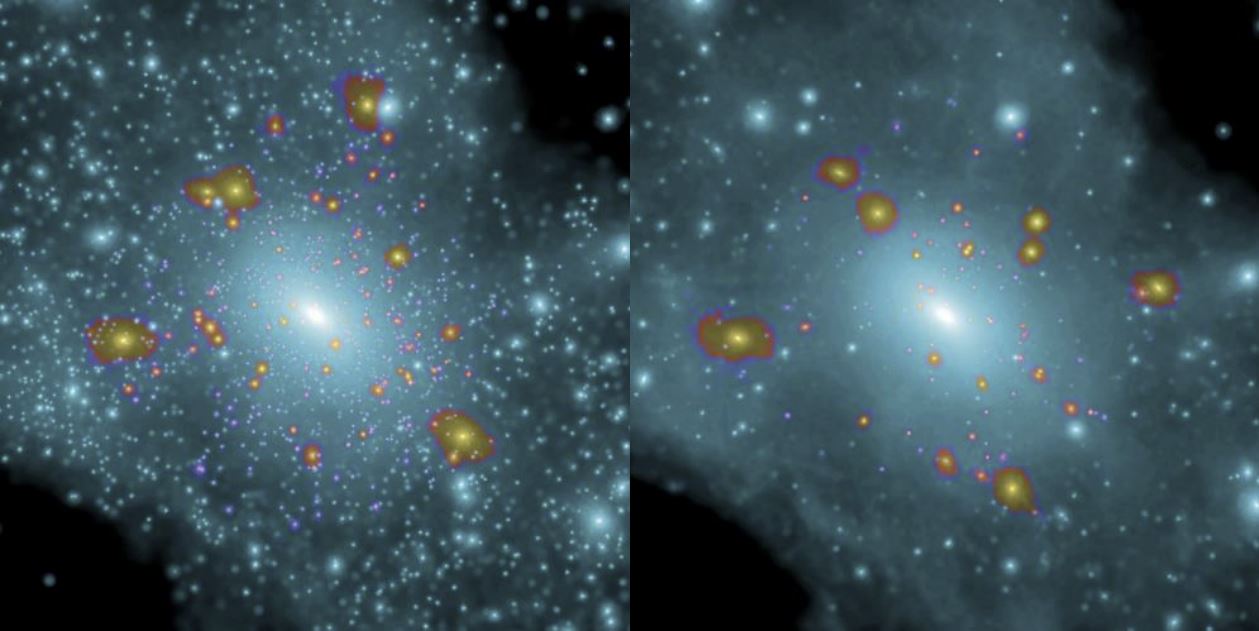Meet a Space Scientist: Ben Moore
This month we have interviewed Ben Moore, professor at the Center for Theoretical Astrophysics and Cosmology at the University of Zurich and Swiss coordinator ofARRAKIHS, the new fast mission selected by the European Space Agency for its Science Programme. ARRAKIHS (Analysis of Resolved Remnants of Accreted galaxies as a Key Instrument for Halo Surveys) will image about one hundred nearby galaxies and their surroundings and provide data to make tests of the so-called Λ-Cold Dark Matter (ΛCDM) cosmology.

What are the current open questions related to the ΛCDM cosmology?
On large scales, beyond that of individual galaxies, the ΛCDM model fits all the observations. But large scales provide few tests for the nature of the dark matter. It is observations on galactic scales that has proved the most challenging for the model to match. ΛCDM makes very robust predictions for the distribution of dark matter within and surrounding galaxies. It predicts a self-similar hierarchy of structures such that surrounding our galaxy should be thousands of smaller dark matter systems. Some of these should be tiny galaxies, and we do observe a few such small galaxies orbiting our own but they seem to be far fewer than predicted. There are other issues for the model at these scales but we only have good data for our own galaxy, that’s where ARRAKIHS comes in.

What are the challenges to test it and how will ARRAKIHS mission help?
ARRAKIHS will take two wide-field telescopes into space equipped with multiple filters. Our aim is to take the deepest images ever taken of a sample of 100 nearby galaxies. Whereas most space telescopes, such as the Hubble or James Webb, image a tiny part of the sky (to photograph the entire full Moon would need over 100 images) with our wide field telescopes we can fit entire nearby galaxies into one image (equivalent to four full Moons). We will be able to map their stellar haloes, search for streams of stars and make a consensus of their satellite galaxy populations. Each of these observations provides a different test of theories for the nature of the dark matter.

You have already worked on discrepancies between ΛCDM models and observations (e.g., Moore et al. 1999) – How can this mission impact your work?
One of the key observations that ARRIKIHS will make is an accurate consensus of the numbers of satellite galaxies and their sizes and brightness. That this could be used as a test for the nature of dark matter was something we first predicted with our supercomputer calculations over two decades ago. Ground based telescopes can not measure this because of light pollution which is why we need a space telescope. I am looking forward to seeing if we can finally confirm or rule out a wide class of cosmological theories!
What is the role of the Swiss team you will lead, and which tools will you use?
Swiss industry will supply an important part of the mission payload. The CCD detectors need to be kept at a temperature of 140 K so they function efficiently. This is about 100 K lower than the natural temperature in space at the Earth’s distance from the Sun. For simplicity, we want to cool the CCD’s passively, which means no moving parts. This can be achieved with special materials and coatings alongside cooling fins, radiators and heat pipes – this is an area that several Swiss Space Industries have a lot of expertise with. On the science front, we are also busy refining our cosmological predictions so that we can optimise our observing strategy. For this we need access to the powerful machines at the Swiss National Supercomputing Centre (CSCS).
The fundamental elements are:
- The cosmological constant Lambda (Λ), which is the dark energy represented by the energy of the vacuum. This would explain the accelerated expansion of the universe and constitute about 68% of the energy density in it.
- Cold Dark Matter, which is the concept of non-thermal, non-baryonic and non-collisional dark matter. This component would account for about 27% of the energy density of the universe.
- The matter as we know it, thus atoms (planets, stars and gas clouds), and photons, which would account for the remaining 5% of all existing mass-energy.